Thatched roof hut at Karanambu Ranch Lodge, Rupunini, Guyana
The homes on the South American continent, even with their fabled thatched roofs and mud huts, is to me, like none other on earth, but then perhaps I am biased, as this is my playing field – the place where I’ve roamed as a child; a place to which I often return, to rejuvenate and escape the madness of this thing we call society.
As I saunter through the streets of the various countries in South and Central America, enjoying all that nature and man has to offer, I am often reminded of the period when I first migrated to the USA. I was constantly being asked by those who were somewhat culturally and socially…..let’s just say, ”deficient”…..what is it like for us folks, in the ”third world countries” to live in our ”mud houses with thatched roofs?”
Well, in those days, I was a sweet, innocent, naive, accommodating girl, and so I would give a sugary smile, bite my tongue, and in the interest of cultural enlightenment, proceed with a dissertation of all the architectural diversity of the Southern Hemisphere. I had failed to realise then that very often, these questions were formulated merely in the interest of derision; I have since learned.
These days, I still retain many of those endogenous South American qualities – sweet, friendly, etcetera – although they have been somewhat eroded and replaced with a veneer of elitism (hey, when in Rome…..), especially cultivated for those unique occasions of having to endure obtuse questioning. I am also way less naive, and with a reduced sense of obligation to educate the ignorant, and so my response to the question today (believe it or not I still get asked it occasionally) will here be brief and pictographic – suited to the trending societal behest of ‘more pictures, less verbiage.’
In keeping with this brevity then, here are photos and some information of a few of those types of ”humble” places that I have personally graced, and do highly recommend. And all I can say is that if the trend of thatched roofs and mud huts is good enough for Francis Ford Coppola, Prince Charles, the McTurk dame, and the host of celebrities who flood to these parts to escape manicured lawns and syndicated media, then it is good enough for me.
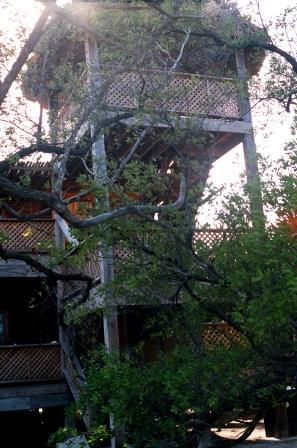
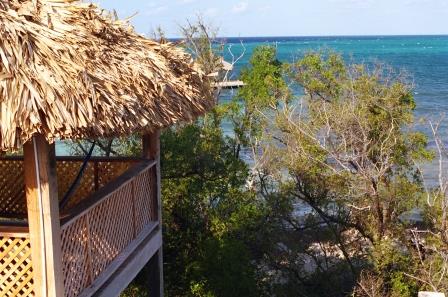
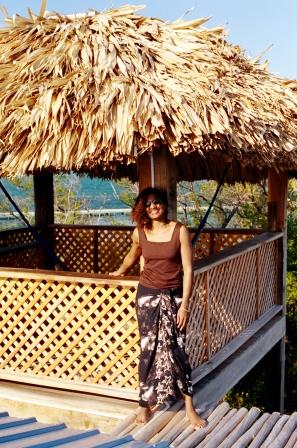
Long Caye, Belize – a private island on Lighthouse Reef. This photo was taken during the developmental stages of what is now Itza resort, where the movie stars lounge, dive, and snorkel at the renown Blue Hole. Standing on the belvedere, one can see the Caribbean sea in the background. Can you imagine how divine a rest in a hammock on a starry night would be? I know, I’ve had a few.
Similar resorts in Belize I’ve visited are Ramon’s Village Resort on San Pedro Island (singer, Madonna’s titular: San Pedro, La Isla Bonita), Seaside Cabanas in Caye Caulker, and San Ignacio Resort Hotel, in San Ignacio. Now of course, while on the mainland, Belize City, I need no hotel, as I am always a welcomed guest at the home of my long-time friend, Jackson.
But if you are looking for a snappy resort in which to drop a fortune down for a night’s rest, you can go knocking at the door of Coppola’s Turtle Inn, or Blancaneaux Lodge (my favourite). Or when in Guatemala (yes, you’re still in Central America – sorry I couldn’t resist, it is just my nature to educate), you can still enjoy the thematic and cinematic genius of Coppola by visiting the Rainforest Casistas at La Lancha Boutique Hotel…thatched roof and all!
If you get down to Guyana, you have left Central America and are now in South America, and you can escape the bright lights, of the capital city, Georgetown, by travelling some 2 hours (boat and Land Rover) to get to the quietude of the Rupununi, home of such resorts as Karanambu, Surama, Dadanawa, Iwokrama, and a host of others sporting eco-tourism packages, ornithology courses, conservation programs, or just a simple retreats, filled with nature walks and canoeing along the inlet of the Guyana Amazon.
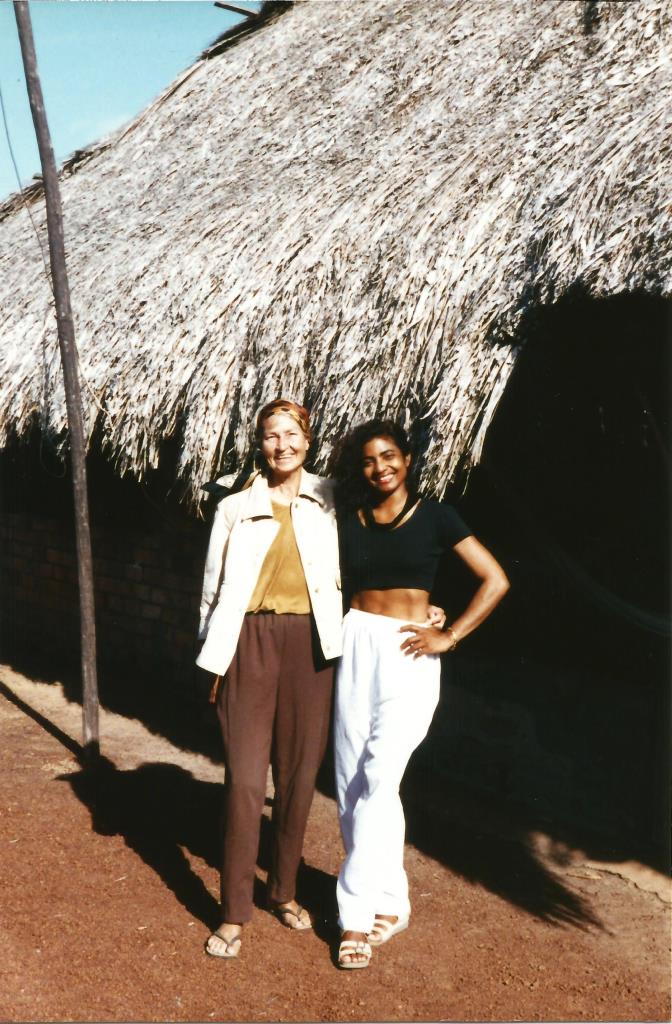 Karanambu Ranch Lodge, with Diane McTurk, outside her (thatched roof) hut
Karanambu Ranch Lodge, with Diane McTurk, outside her (thatched roof) hut
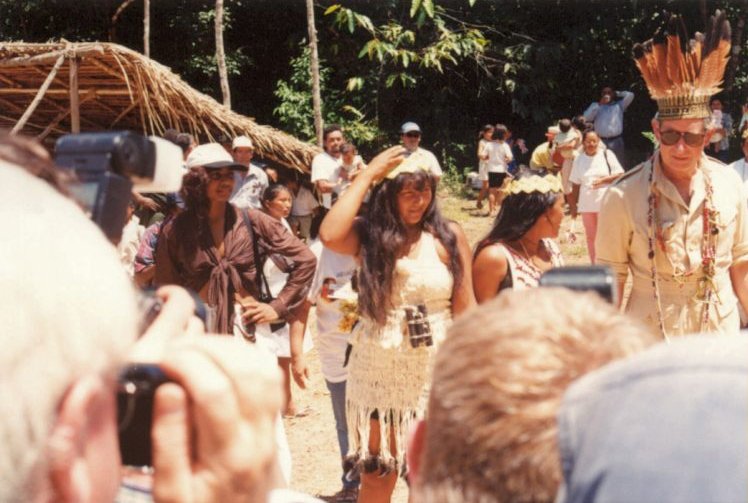
Surama Eco-Lodge, with Charles, Prince of Wales (right), Patron of the Iwokrama project. Being a good sport, he even wore the festive headress, made of feathers; I (left) opted for something less flambouyant, like a baseball cap.
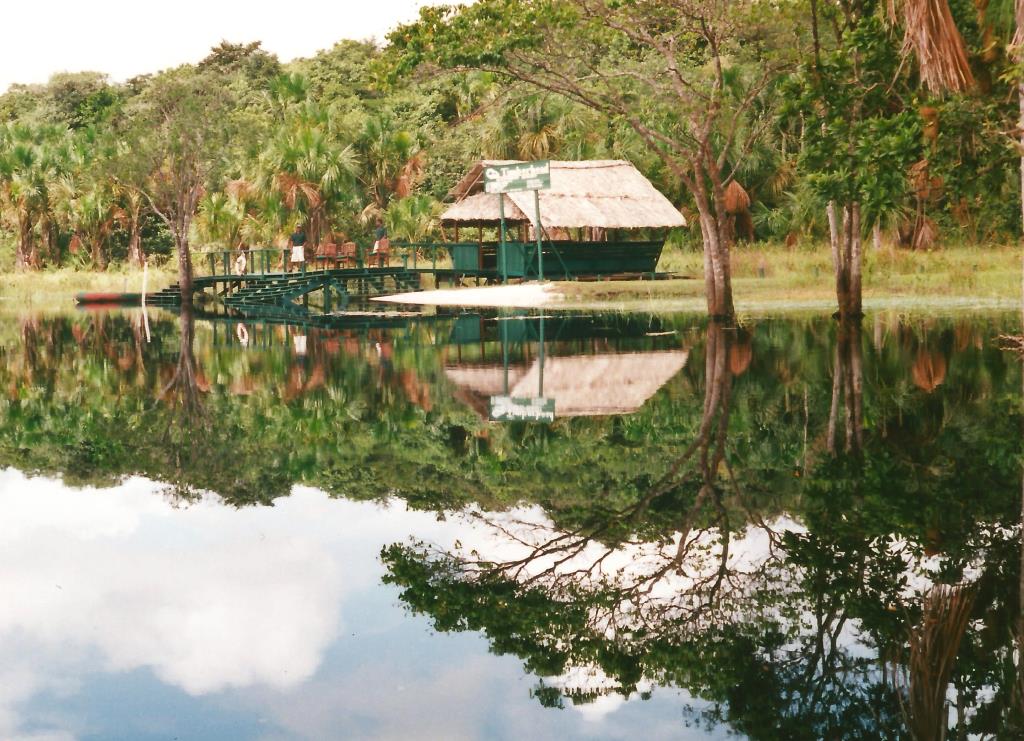
Timberhead Rainforest Resort, Guyana, prolific with the tailor bird, and you will see their boot-shaped nests hanging off the trees as you boat along the river’s edge.
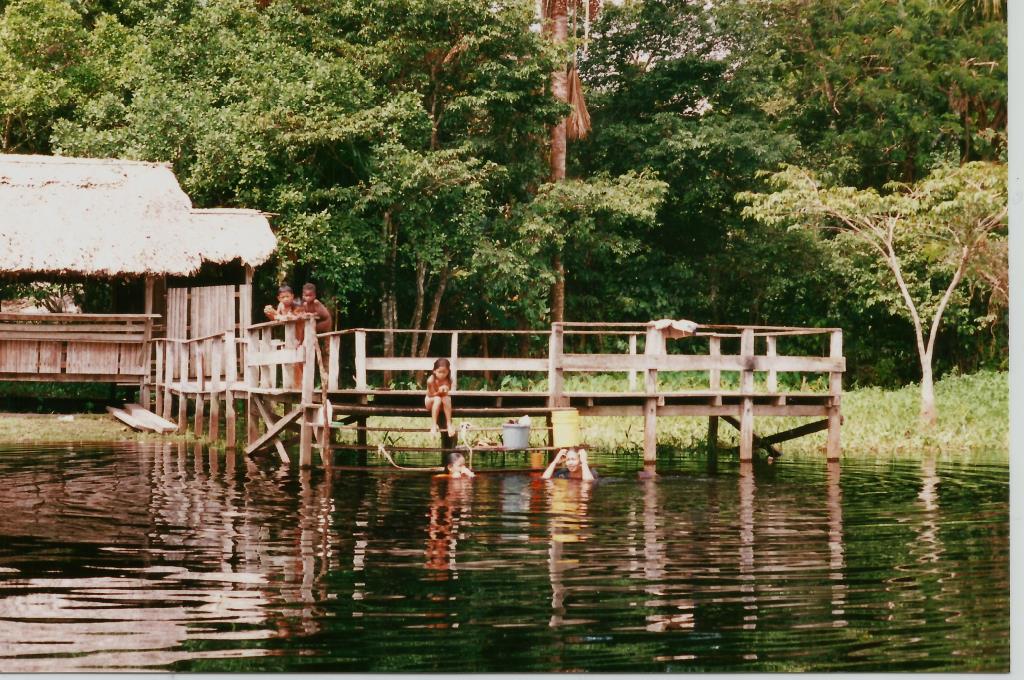 Along the Essequibo coast, you will find various tribes of Guyana’s indigenous Amerindian people, and yes, they live in thatched-roof homes and bathe in the clear, cool water, which runs alongside their front yard. A group of youngsters gather here on the landing for their evening scrub down.
Along the Essequibo coast, you will find various tribes of Guyana’s indigenous Amerindian people, and yes, they live in thatched-roof homes and bathe in the clear, cool water, which runs alongside their front yard. A group of youngsters gather here on the landing for their evening scrub down.
So, in summary, the vernacular in South America maintains the thatch roof, and how is it to live in thatched-roof homes, you ask, well, the reality is that many of you cannot afford them, and probably won’t appreciate the retreat from your social maelstrom.
These types of structures are prevalent on resorts, are surrounded by exotic animals, have savoury fruit and food, are deep into forested areas, and have exotic names like Cabanas, Tiki-Tiki room, Shangri-la, and other pseudonyms which will cost you a pretty penny just to learn how to pronounce.
Now of course I cannot leave you without providing something to ruminate on, so parenthetically, pardon my musing here. I have often wondered why it came to be that the lexeme ”indigenous,” from the Latin word indigin, which means ”a native, or original inhabitant,” spawned the cognate ”indigent,” which is described in Webster’s American dictionary as meaning (adj) ”poor, destitute, penniless,” and the noun is described as being a ”vagrant, homeless person.” Are they the famed owners of the mud homes? Well, I should meet them.
And about those mud houses? In my lifetime I have yet to see a real one, so when you do, please post, as I am dying to have that experience and knowledge. And when you do, then I may even write to enquire of you ”how is it to live in one of those mud houses?”
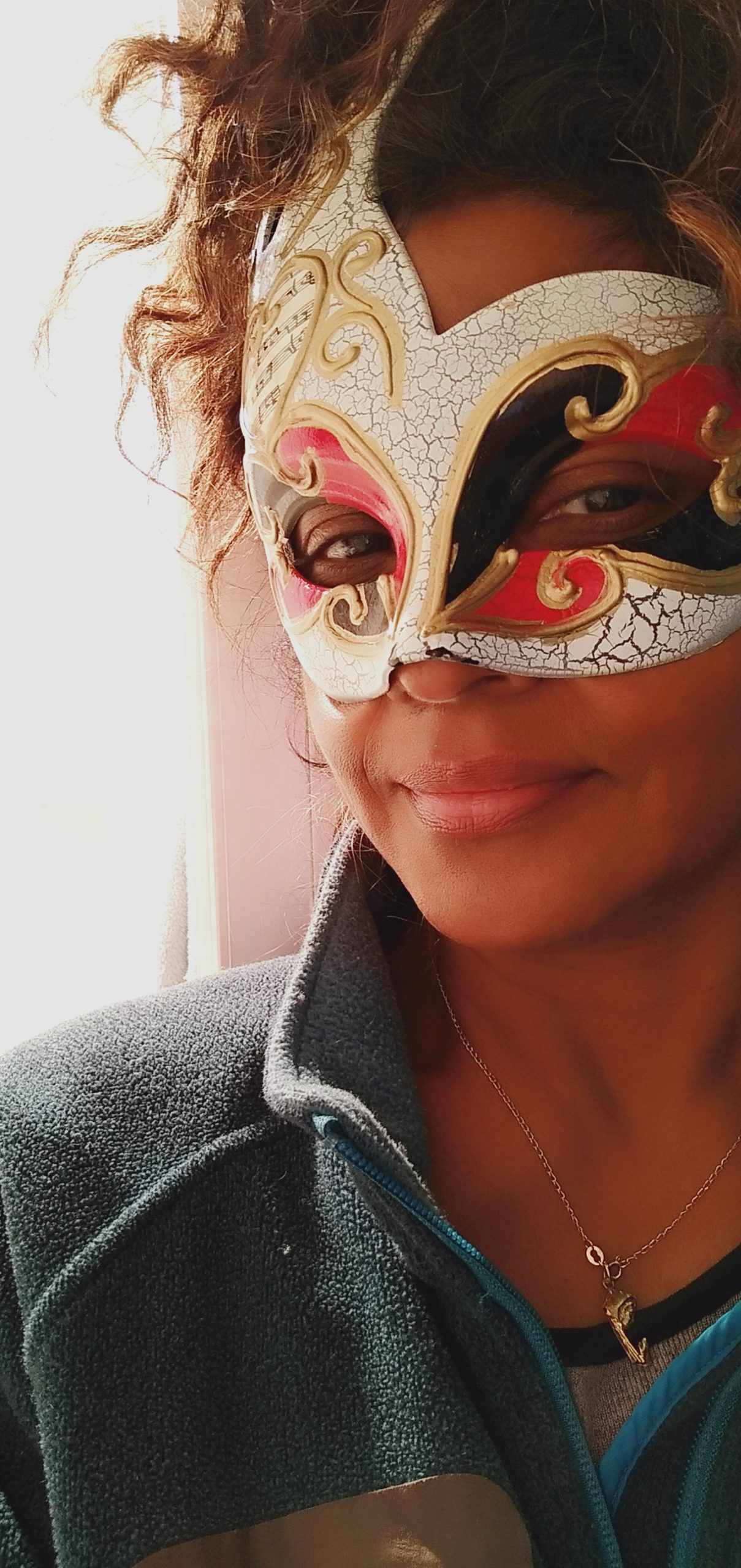
More Stories
Shacking-up could affect both health, and credit!
Alone or not alone? That is the quintessential question for these stringent times of skyrocketing unemployment rates and soaring eviction...
Travel Tips: A backpacker’s Handbook
Backpackers: What are the most important things/lessons you learned from traveling the world? Enna Morgan·Updated December 5 Former Faculty at Tsinghua University (清华大学)...
SO YOU THINK YOU CAN ACT!!
It’s fresh! It’s innovative! It’s ridiculously entertaining! And best of all, it’s in Chinglish. So there is no excuse for...
TWO MEN AND A HOLE
A rabbit hole, that is! In December you doubled over in side-splitting laughter as K & Q tracked a killer...
Bloody Mary’s Debut: A Smashing, Sold-Out Show!
Congratulations! Congratulations! Congratulations! To the cast, crew, producer, and director of the Bloody Mary Interactive Murder Mystery Dinner Show! Oh,...
Quora: Why did Stephen Colbert mention something about Trump saying something that was written by someone else, when a lot of people have scriptwriters or speechwriters?
Enna Morgan, lifelong field of academic study, observation, and worldwide experience Thanks for the A2A, Korey. Because even though there...
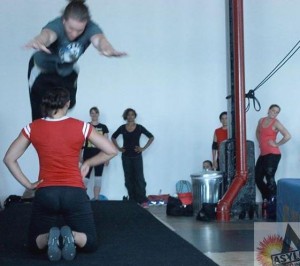

Average Rating